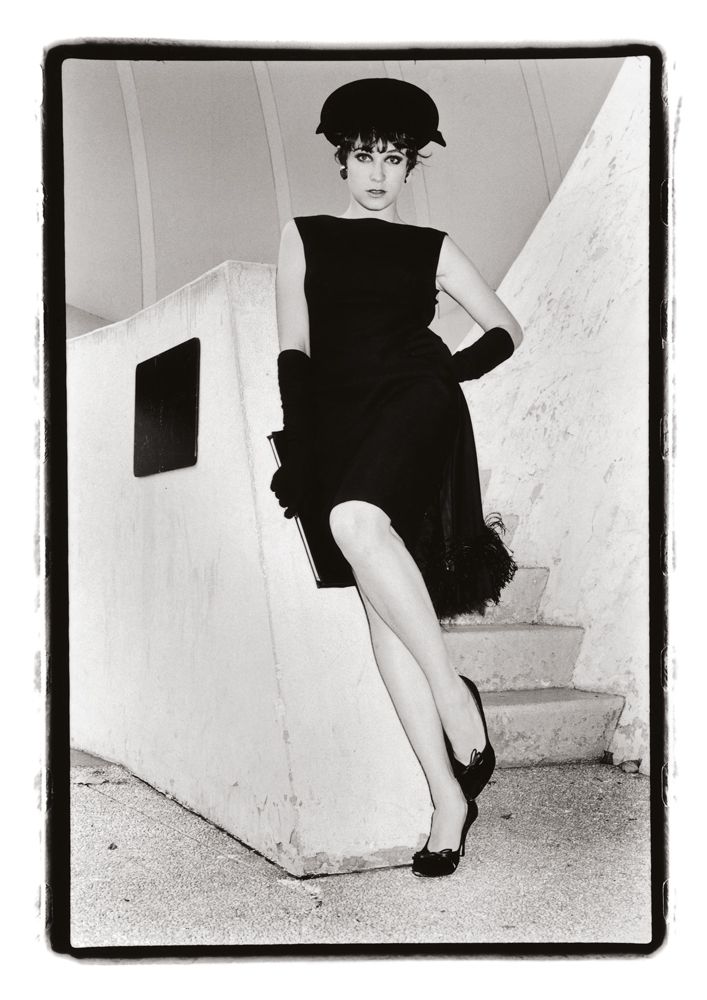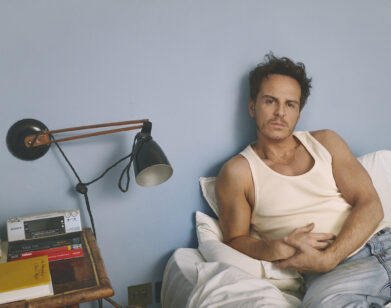How Amy Arbus Captured an Era
ABOVE: ALL PHOTOS COPYRIGHT AMY ARBUS.
The collision of downtown ’80s fashion and music vibrates through the fascinating new documentary, On the Street, screening on Monday at the LES (Lower East Side) Film Festival, which runs through March 18. The perfect embodiment of the LES Festival’s hip, indie, downtown spirit, On The Street chronicles photographer Amy Arbus’ eponymous fashion column for The Village Voice from 1980-90. Every six weeks, Arbus walked the streets of the East Village, Soho and Lower East Side, photographing the stylemakers, scenesters, and trendsetters.
“I would get a release and phone number from them. When they were chosen to be in the paper, I would call them afterwards and do a short interview on the phone. I would ask them what they were dressed for, why they had chosen that outfit,” Arbus tells Interview. (One example? “This was a going-to-the-deli look,” explains nightlife impresario Susanne Bartsch.)
When Arbus was sorting through 500 portraits to compile her 2006 book, On The Street, she wondered what her subjects were doing now and tracked many down through Susanne Bartsch. The film is a breathtaking mash-up of Arbus’ original black-and-white photos—some of which we’ve been lucky enough to collect in the slideshow above—current interviews with her subjects, and rare archival color photos of the streets, clubs, and galleries of the ’80s East Village.
“Susanne Bartsch’s parties were hotspots for the androgynous, uptown/downtown/Berlin drug addicts, drag queens, killers, and perverts,” says performance and cabaret artist, Joey Arias (Mermaids on Heroin), whom Arbus says she saw sing Billie Holiday in drag. Arias also performed on early bills with the woman who would become the Queen of Pop, Madonna. “Madonna wasn’t famous then. The photo was taken in 1983, at St. Mark’s Place and Second Avenue,” Arbus says. “That was literally the first review of her first big single, which I think was “Holiday.” Nobody knew who she was yet. And she was still using her last name. I’d heard she lived on the floor of her recording studio at the time; that’s gossip.”
“I remembered her from the gym that we both went to, which defies imagination, because I don’t know how either of us was affording a gym membership,” Arbus says. “But she used to sit in the dressing room, naked, for the longest time of any of the other women. Just sitting there, while everyone else changed clothes, because she had the best body!”
From the perspective of some 30 years, the interest in ’80s downtown culture has soared, resulting in recent documentaries like The Universe of Keith Haring (2008), Jean-Michel Basquiat: The Radiant Child (2010) and The Other F Word (2011). Arbus’ photos are now considered priceless documentation of the fashion of that vanished era—a time capsule of vintage ’50s and ’60s, rockabilly, new wave, mod, punk and self-design mixed with couture Yohji Yamamoto, Comme des Garçons, Jean Paul Gaultier, and Vivienne Westwood. Arbus’ own favorite haunts included Andy’s Chee-Pees for vintage, Trash and Vaudeville, Fiorucci, Manic Panic, and WE2 (Westwood’s Thompson Street boutique). “Fashion was their art form,” Arbus notes. “It’s almost like dressing became performance art for them.”
While the documentary focuses on the fiercely creative fashion, filmmaker John Spellos, who met Arbus when she was teaching a seminar at ICP, widens his lens to explore the deeper issues raised by Arbus’ interviews. Spellos does what good journalists do—he follows the story wherever it leads, which, in this case, entails how gentrification, AIDS, drugs, the economy and aging impacted the East Village subculture.
“Documentaries are made in the editing room,” Spellos told us. “We got lucky because these are really smart, articulate people who can talk about that time in an intelligent way and really paint that picture. Several gave me all their personal snapshots, which are the color photographs that you see. They gave me thousands of photographs and really wanted to get the story out.”
The film implicitly makes the case that enough time has elapsed since the downtown ’80s that it now can be evaluated as a revolutionary and aesthetically significant period, not unlike Paris in the 20s. From 1977-87, the neighborhood between 14th Street and Houston, Broadway to Alphabet City, produced Madonna, Jean-Michel Basquiat, Keith Haring, Julian Schnabel, Cindy Sherman, Robert Longo, Kenny Scharf, Jonathan Demme, Spike Lee, Jim Jarmusch, Susan Seidelman, John Lurie, Def Jam, The Talking Heads, Patti Smith, The Ramones, Blondie, Sonic Youth, Anna Sui, Stephen Sprouse, and dozens of other artists. In that context, Arbus’ photographs are a time capsule for art historians.
In 1984, Arbus did an exhibition at the Mudd Club, which, like Pyramid, Holiday, Area, Limelight and the Palladium, became de facto curators, not only of music and fashion, but also of visual and performance art. Arbus said she felt on the periphery of the art scene, so interviewing people gave her an opportunity to talk to them. “I don’t think they felt I was an outsider, but I did. The photography was my access to them, because I didn’t hang out with them at night. I was very curious about them.”
She selected her subjects on the street by “instinct really. When I started working for the Voice, which was on spec for no money, they told me that they were looking for a street-fashion photographer. They wanted me to photograph anybody who turned my head or looked unusual. The bar kept raising, as I was doing it year by year, because I was bringing them more outrageous and bizarre combinations of clothing. People were dressing much more punk and out there. So they were disappointed unless I was outdoing myself.”
Her subjects frequently navigate the thin line between fabulous and freakish—at times recalling the haunting tone of photographs taken by her mother, Diane Arbus. We asked Arbus what, if any, influence her mother’s work had on her own style. “Both my parents started out as fashion photographers, ironically, and I flirted with fashion throughout the ’80s and ended up a portrait photographer. It was sort of backwards, because fashion photographers were making a lot more money. But my work has evolved so much since then and is so much more my own. Because I teach, I meet people whose work is much more derivative of hers than mine. So of course I love the comparison, but I finally feel like I have my own voice.”
She said her lasting memory of her mother was that “she used to love to photograph me and I felt it was the most incredible, loving thing for a kid. I loved posing for her. I don’t remember a lot of discussion or direction, but she photographed me jumping rope and on the bus and walking down the street. I remember that around the time I turned 13, she stopped photographing me and I was heartbroken. I think I was just at an awkward stage. In the jump rope photo, I was wearing a spring dress, it was very cute and girly and silly, unlike most of the things I wore. I went to Little Red Schoolhouse; we could wear blue jeans before any other girls could. It was unheard of.”
Arbus attended Berklee School of Music before studying photography at Boston’s Museum of Fine Arts. “It wasn’t rebellion; it just didn’t dawn on me to [do photography] because I felt like it was being done. And when my mom passed away and my father quit photography to take up acting, all of a sudden there was this tremendous loss. And that’s when I began photographing. I didn’t put an enormous pressure on myself to be great; I just wanted to have an interesting life, like my parents had done before me.”
ON THE STREET PLAYS AT THE LES FILM FESTIVAL ON MONDAY, MARCH 12.







